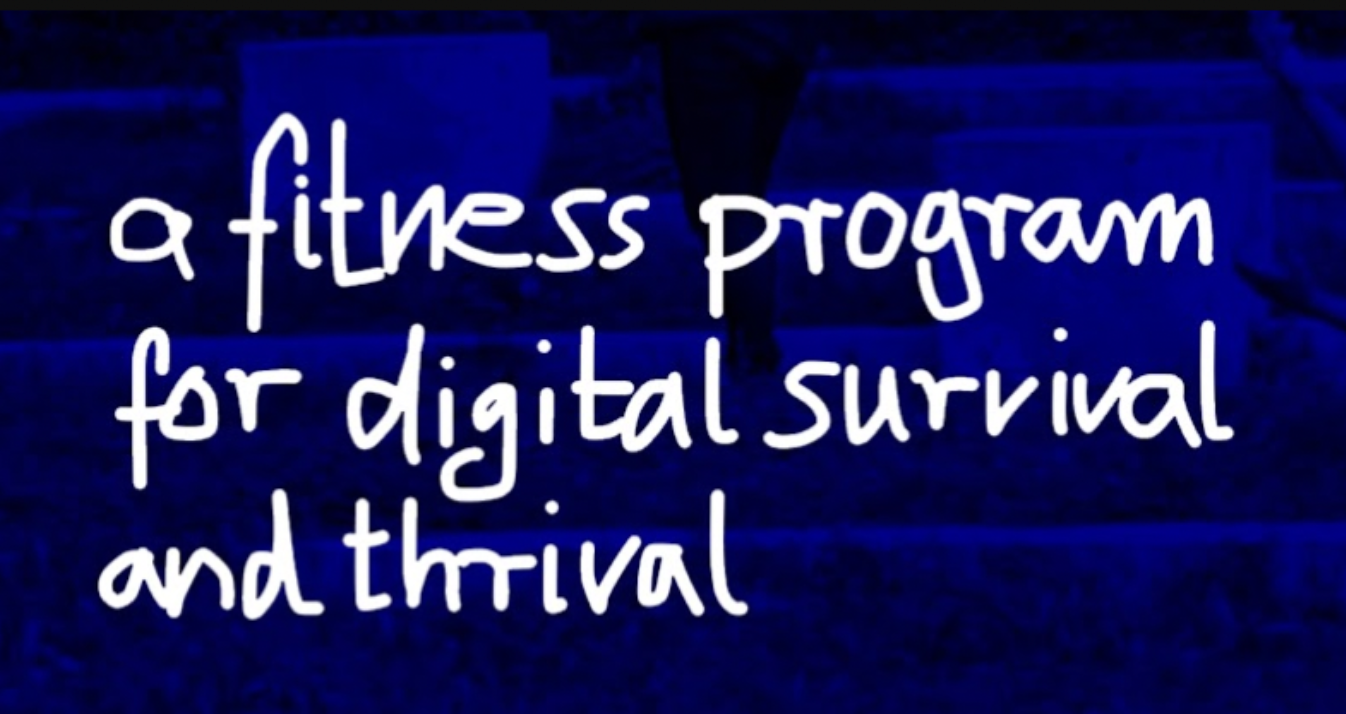EXERCISES FOR THE DIGITAL AGE
2020 - today
20 videos, HD, colour, sound
each between 1 and 5 min
concept & instigator – Gabriel Hensche
curator & collaborator – Ashlee Conery
postproduction – Dernis Golenja
sound design – Becky Brown
camera – Petra Mrša
advisor – Tomke Brown
with contributions by OMSK Social Club, Rory Pilgrim, Mattin, Jin-me Yoon, Ayumi Goto, Peter Morin, Roberto Fassone, Jan Hofer, Niccolò Moronato, Raùl Hott, Dorothea Rust, Thanh Nguyen, Phung Nam, Kim Trang, Giang Nguyen Hoang, Claire Nichols, Stéphanie Cadoret, Jol Thoms, Delphine Pouillé, Sarah Friend, Mohsen Hazrati, Sophie Kahn, Gabriella Torres-Ferrer, Sonja Pregrad, Bjørn Melhus

Exercises for the digital age consist of co-created how-to videos that help you survive and thrive in the digital age.
The internet and digital technologies bring new qualities to our lives by making things possible that were never possible before. But these technologies (and their monetarization) bring also challenges to our lives. (Data shows, for instance, that social media harm teens’ mental health). We need to be clear about what we want from these technologies and how we want to use them so that they benefit us and do not harm us.
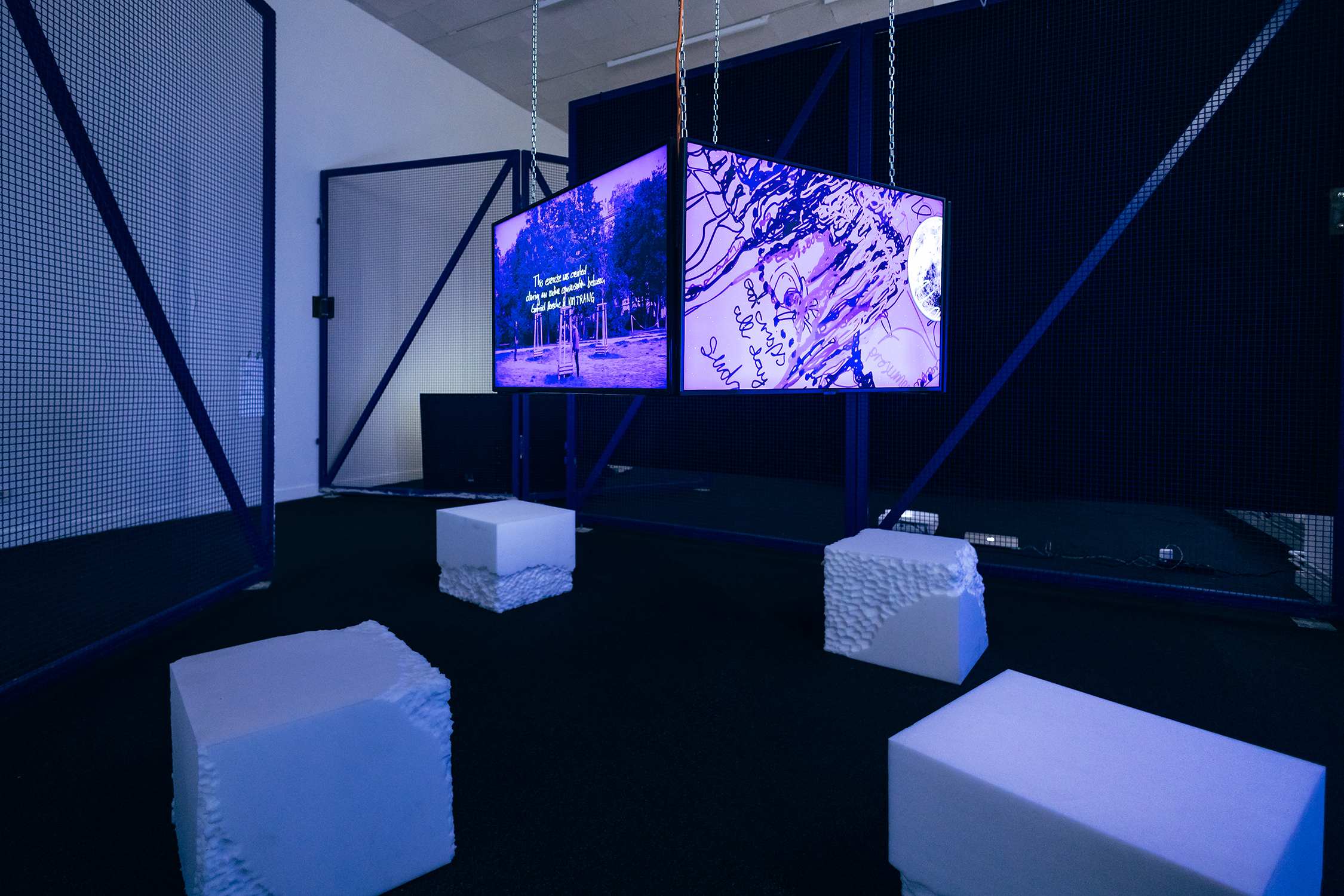
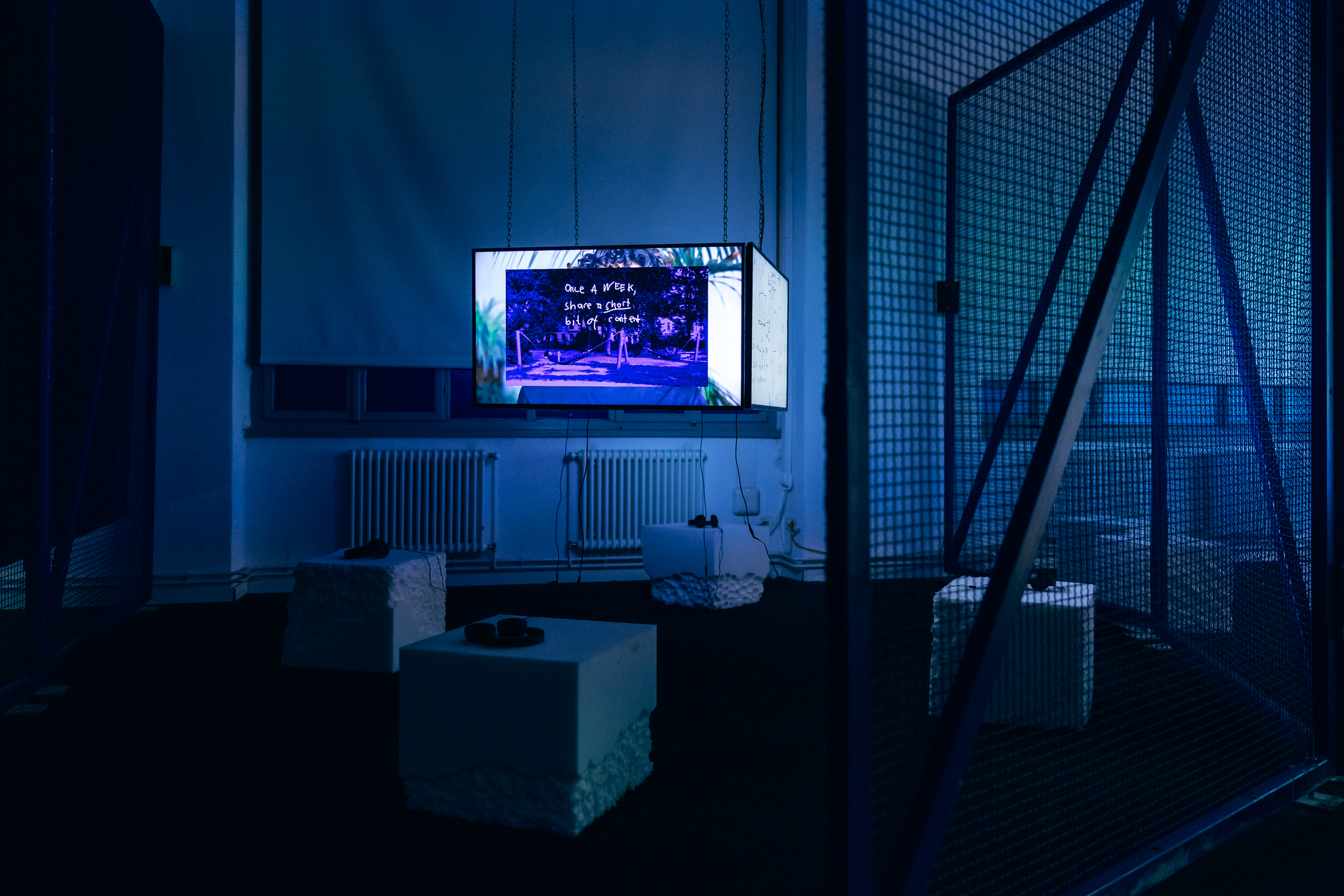
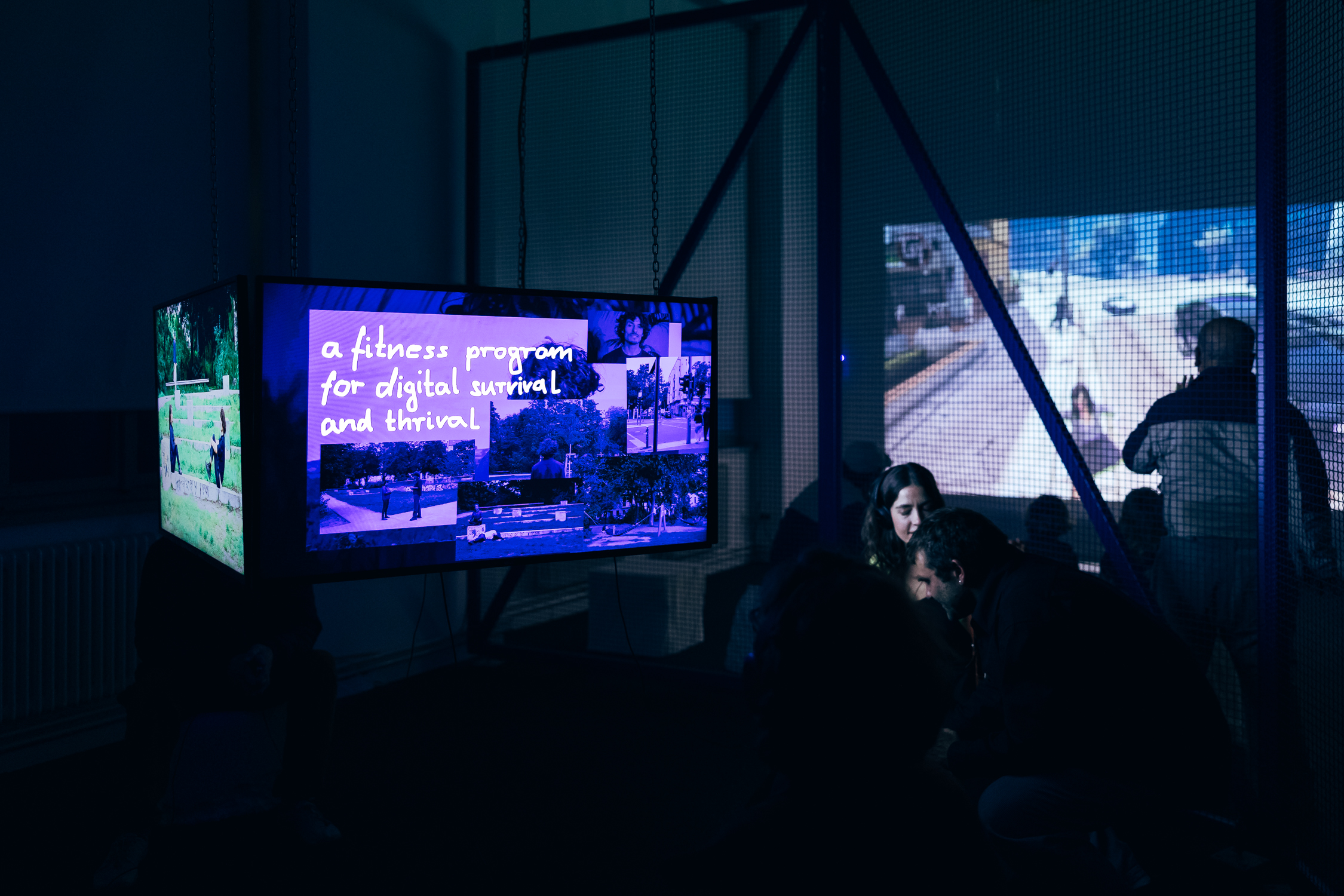
How can we get more out of the digital than we put in? What do we do to stay physically and mentally healthy while spending time online? And can our digital time be more playful and fun?
Gabriel asks these questions to artists from around the internet and collaboratively develop an exercise with each of them for digital survival and thrival.
These exercises vary from breathing with a tree, to smelling the digital or digitizing a dream. He then produces collaboratively with curator Ashlee B. Conery exercise videos to share these artists' practices for physical, mental and virtual ‘fitness’ to hopefully help audiences actively and joyfully move through online and offline spaces.
how to produce an about video
how to guide a web tour
how to breathe the digital
how to own the map
how to rename and shuffle
how to digitally digest
how to feel safe in an unsafe way
how to breathe with a tree
how to create an encounter full of love and mystery
“Dear Raúl,
I hope you’re well.
Do you sometimes draw while being on the phone? I’m talking about these mindless drawings on the edge of the sheet on your desk – these shapes, lines and doodles that emerge half consciously. For my project “Exercises for the Digital Age” that I developed in cooperation with the Goethe–Institut Hanoi, I would like to transfer this activity to a shared digital realm with you while talking about the relationship between you and your digital self.
Hope you are up for it!
For more than a year the pandemic has been affecting our lives. In my case, it led to more screen time – which is exhausting, but also led to wonderful conversations with peers where thoughts, words and expressions crossed time zones from CEST to BST. While lying on the couch, sitting at the kitchen table or walking in the streets, we can circulate among our virtual communities. As we are no longer merely confined to our physical bodies, we can slip in and out of our online lives. At the same time addiction algorithms of Las Vegas’ slot machines are transferred into digital technologies in order to create sticky screens and to collect eye–ball–hours. I’m interested in how you would describe how your digital self bleeds into your physical self (and vice versa), and learn more about what you personally do to not be at the mercy of digital media, but to proactively maneuver through it – virtually, physically or mentally?
From time to time I found myself moving from the screen to the floor and following exercise instructions displayed on the screen. Curious where this behaviour came from, I started to look at the history of exercising. I learned that exercising–as we think of it today– was invented in the 1960’s in the US. With the growing standard of living in the 1950s, but also with the spread of television, more and more people have become couch potatoes.
I hope you’re well.
Do you sometimes draw while being on the phone? I’m talking about these mindless drawings on the edge of the sheet on your desk – these shapes, lines and doodles that emerge half consciously. For my project “Exercises for the Digital Age” that I developed in cooperation with the Goethe–Institut Hanoi, I would like to transfer this activity to a shared digital realm with you while talking about the relationship between you and your digital self.
Hope you are up for it!
For more than a year the pandemic has been affecting our lives. In my case, it led to more screen time – which is exhausting, but also led to wonderful conversations with peers where thoughts, words and expressions crossed time zones from CEST to BST. While lying on the couch, sitting at the kitchen table or walking in the streets, we can circulate among our virtual communities. As we are no longer merely confined to our physical bodies, we can slip in and out of our online lives. At the same time addiction algorithms of Las Vegas’ slot machines are transferred into digital technologies in order to create sticky screens and to collect eye–ball–hours. I’m interested in how you would describe how your digital self bleeds into your physical self (and vice versa), and learn more about what you personally do to not be at the mercy of digital media, but to proactively maneuver through it – virtually, physically or mentally?
From time to time I found myself moving from the screen to the floor and following exercise instructions displayed on the screen. Curious where this behaviour came from, I started to look at the history of exercising. I learned that exercising–as we think of it today– was invented in the 1960’s in the US. With the growing standard of living in the 1950s, but also with the spread of television, more and more people have become couch potatoes.
In the middle of the Cold War, the president at the time, John F. Kennedy was above all worried that he would not find enough fit soldiers in case of war. He created public programs to anchor body exercises in the lives of the American population. Jogging, fitness aerobics or the Muscle Beach Weightlifters gained popularity within a very short time supported by a growing commercialisation of these activities. If this kind of exercising emerged with the spread of television, with this project I want to collectively investigate what practices we need to develop in a time of the internet, digital media and AI.
The project proposes a collective effort – in the form of one–on–one online conversations (with mouse/ trackpad/pen drawings as a conversational tool) – to connect the informal knowledge of artists, thinkers and practitioners that may lie at the backside of their practices. In a series of conversational online workshops we’ll create new exercises together, which will range from physical to mental, digital to analog, affirmative to critical, practical to utopic. They challenge the instrumentalization of affect, cure overstimulation or protect our desires from being hijacked. They could break habits we don’t need, implement new ones or just be a fragment of your practice that we believe is worth repeating.
I know you are busy but since I’m sure that drawing, talking and associating with you would be fun and interesting, I would be happy to have you involved.
Best regards,
Gabriel”
Exhibition catalog text“The Ignorant Schoolmaster,” 2021
by Gabriel Hensche
edited by Tomke Braun
The project proposes a collective effort – in the form of one–on–one online conversations (with mouse/ trackpad/pen drawings as a conversational tool) – to connect the informal knowledge of artists, thinkers and practitioners that may lie at the backside of their practices. In a series of conversational online workshops we’ll create new exercises together, which will range from physical to mental, digital to analog, affirmative to critical, practical to utopic. They challenge the instrumentalization of affect, cure overstimulation or protect our desires from being hijacked. They could break habits we don’t need, implement new ones or just be a fragment of your practice that we believe is worth repeating.
I know you are busy but since I’m sure that drawing, talking and associating with you would be fun and interesting, I would be happy to have you involved.
Best regards,
Gabriel”
Exhibition catalog text“The Ignorant Schoolmaster,” 2021
by Gabriel Hensche
edited by Tomke Braun
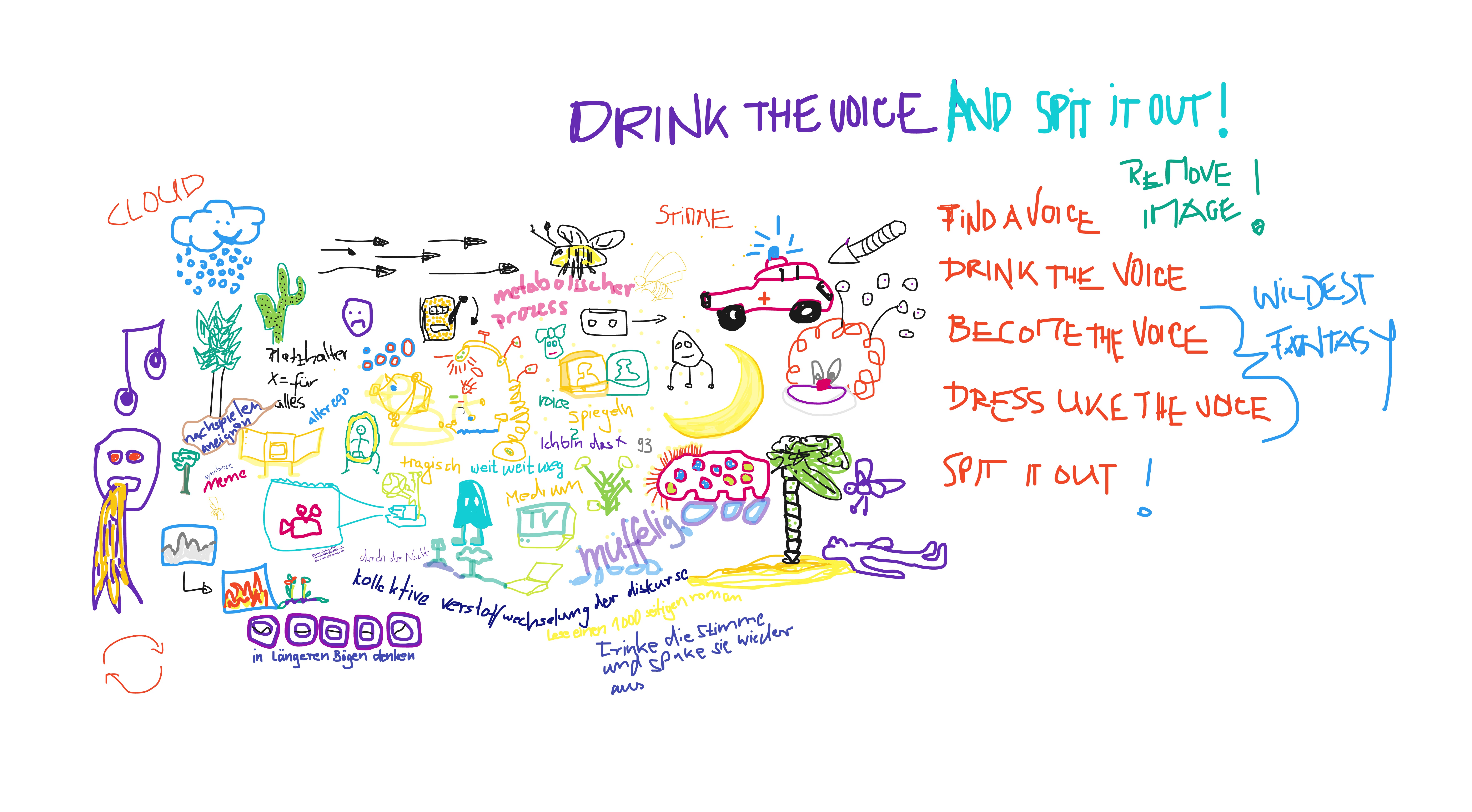
drawing/conversation with Bjørn Melhus

drawing/conversation with Raúl Hott

drawing/conversation with OMSK Social Club
Supported by

© Gabriel Hensche 2025

